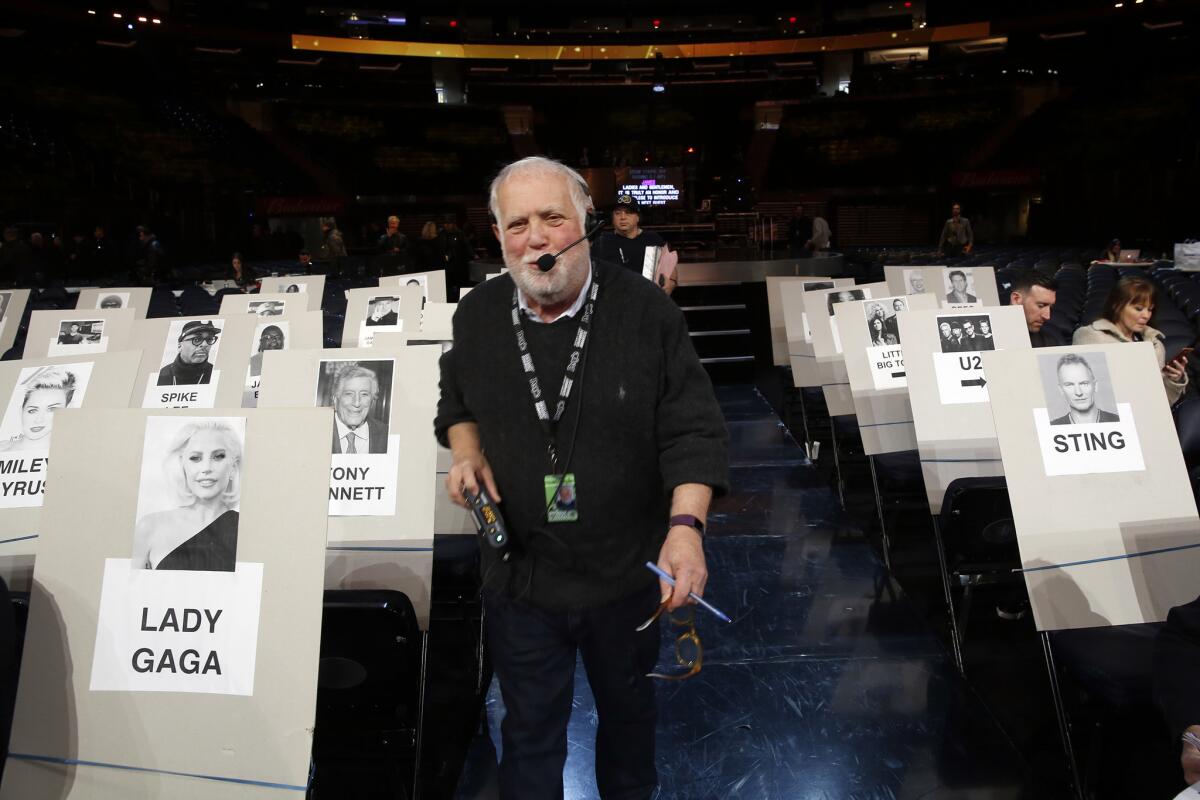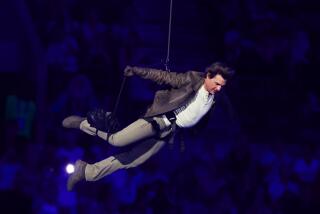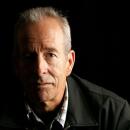Grammy producer Ken Ehrlich on 40 years of chaos, flubs and impromptu immortality

Veteran TV producer and director Ken Ehrlich began his career with the Grammy Awards telecast in 1980, and in four decades presiding over the broadcast has become perhaps best known for mashup live performances featuring musicians from often wildly disparate genres and generations. Think Elton John and Eminem in 2001, classical pianist Lang Lang with heavy metal group Metallica in 2014 or Paul McCartney, Kanye West and Rihanna in 2015.
The 62nd Grammy Awards on Jan. 26 will be his final night at the helm, after which Ben Winston, executive producer of “The Late Late Show With James Corden,” will take over.
“I don’t know what my legacy is going to be with this show,” Ehrlich said. “I don’t know if next year I’ll be forgotten. I don’t care. These have been 40 of the most amazing years of my life.”
We invited Ehrlich, 76, to share in his own words the watershed moments from his long tenure of bringing the awards show to viewers around the world.

MOST NERVE-RACKING
Justin Timberlake, Al Green, Boyz II Men and Keith Urban, “Let’s Stay Together” (2009)
“This was the day Chris Brown and Rihanna bailed on the show during dress rehearsal. First we heard that he wasn’t coming and had no clue what happened. I said to myself, ‘I’ll just let the show breathe a little more, make up three minutes here or there; I’ll be OK.’ Then 15 minutes later, I got a call that she wasn’t coming. Someone finally came in and said they were out last night, somebody hit somebody, they’re not going to be here today. Now I’ve got nine, 9½ minutes to fill.
“I was sitting next to [Timberlake’s manager] Johnny Wright. I said, ‘What am I going to do?’ He said, ‘I think there’s something we can do with Justin.’ We walked back to Justin’s dressing room and told him we had a problem. Justin, with more presence of mind than I had at that moment, said, ‘Let’s look at who else is on the show’ and zeroed in on Al Green’s name. He said, ‘I just did “Let’s Stay Together” with him in Memphis — why don’t we see if he’ll do that with me?’ We also had Boyz II Men on the show, and I thought we could use them. We walked past Keith Urban in the hallway and asked him, ‘Would you put a solo in “Let’s Stay Together”?’ He said ‘You must be [messing] with me.’ We wound up with a great number with Al and Justin, plus Boyz II Men and Keith Urban in the bargain.”

MOST TALKED-ABOUT
Aretha Franklin singing “Nessun Dorma,” subbing for ailing tenor Luciano Pavarotti (1998)
“It was 8:10, so we’d already been on the air for 10 minutes, and Ron [Basile, one of the show’s producers] came to me with a little note that said, ‘Mr. Pavarotti wants you to call him. He’s at home in his apartment.’ I called and he said, ‘Mr. Ehrlich, I am sick, I cannot sing tonight, I will come sing next year.’ After I said, ‘I hope you feel better,’ I thought, ‘What am I gonna do? There’s a 35- to 40-piece orchestra and 30 singers ready to play “Nessun Dorma.” ’
“Then I remembered Aretha had sung it at the MusiCares dinner two nights before for him. She was going to be on the show to do a number related to the ‘Blues Brothers 2000’ movie. I ran upstairs to her dressing room [at Radio City Music Hall] and I took [producer-engineer] Phil Ramone with me. He had basically done MusiCares that year. We walked in, she was sitting there eating chicken, and I just laid it out to her: ‘How would you like to sing “Nessun Dorma” in front of the world?’ She looked at me like, ‘I’ll do it,’ but then said, ‘I need to rehearse it.’ One of us had a cassette of the afternoon rehearsal — that was in the days of boom boxes. We played it for her, and she said, ‘This is three keys higher than I sing it.’ Well, there was no way we could get it transposed for the orchestra and the singers in an hour. So she said, ‘I can do it.’ I walked her down and stood offstage with her. It was the first time she’d seen the setup with the orchestra and singers. She took my hand and squeezed it and said, ‘This is going to be fun.’ Neither of us ever forgot it. After that, she put it into her concerts, and it became one of her signature pieces.”

MOST CHAOTIC
The show after Whitney Houston died (2012)
“We heard about it around 3 p.m. on Saturday, the day before the show. Todd [Smith, a.k.a. LL Cool J, the show’s host that year] was there with us. I wasn’t thinking in terms of his monologue at that moment. I was thinking we needed to do something, onstage, and I knew the answer was to get Jennifer Hudson to do one verse and one chorus of ‘I Will Always Love You,’ with the barest accompaniment. We brought her in and cleared the house, just her and [house band member] Greg Phillinganes on piano. She couldn’t get through it in the morning when she came in, but she got it on the show. Then it was all about Todd. He said, ‘We need to start the show off with a prayer. David [Wild, the show’s scriptwriter] and I looked at each other. But we are not the spiritual beings that Todd is. He came in the next morning with this prayer, we rehearsed it, put it on, and it was the most appropriate thing in the world.”

MOST UNDERAPPRECIATED
B.B. King, Buddy Guy, Keith Urban and John Mayer salute to Bo Diddley (2009)
“Bo Diddley was shredding before it was called shredding. This segment was sandwiched in between a couple of other things that had more ‘Pow!,’ but this was about musicality. If you can find it on YouTube, you can see the way it was shot: We spent [camera] time looking at the guys who weren’t playing to appreciate the guy who was playing. It’s as much about humility and generosity as anything else.”

MOST MIND-BOGGLINGLY COMPLICATED
Opening number (2005)
“We opened the show with five Grammy performers stationed all over Staples Center: Gwen Stefani and Eve, Maroon 5, Black Eyed Peas and Los Lonely Boys. I’ve always loved the finale scene from the movie ‘Fame,’ where all the different departments come together and perform ‘I Sing the Body Electric.’ And I had always tried to find a way to steal it for the show. The closest I came was that year. We had done three acts, and even four acts in the same number, but this one had the most people coming on- and offstage. Rehearsing it was almost impossible — it was like herding cats: This one’s here, that one’s there. But it was fun to do.”

WILDEST SURPRISE
Adele “Fastlove” restart during George Michael salute (2017)
“Adele restarting her George Michael tribute because she was out of key — I sure didn’t expect her to stop and call out, ‘Hey, Ken, I’m sorry, I need to start this over.’ Obviously, she didn’t hit the key at the beginning. I think it was because she didn’t get the bell note. It’s a number she starts a cappella. So she stopped, God bless her. She had a choice — she could have gone on and gotten creamed by people who knew. But she stopped and said, ‘Let me start over.’ She loved George Michael. That’s the reason I got her to do it.”

MOST FUBAR
Sly Stone tribute with Joss Stone, John Legend, Van Hunt, Maroon 5, Ciara, Aerosmith’s Steven Tyler and Joe Perry (2006)
“I got hosed by Sly’s manager. It wasn’t obvious in the beginning, but it became clear that he hadn’t told me that Sly didn’t really want to do this. He was a mess. He rode his motorcycle to Staples. He still had his motorcycle suit on when he performed — he got off the bike, came onstage, did the number, then got back on the motorcycle and left.”

MOST MEANINGFUL
“Same Love” with Macklemore and Lewis, Queen Latifah, Madonna and Trombone Shorty (2014)
“We had 28 couples of all sexual preferences who got married onstage. I had heard from my gay daughter that couples were getting engaged at Macklemore shows, so I will always be grateful to her for telling me about that. The number was wonderful —and it made a difference in the culture. It made a bold statement.”
More to Read
The biggest entertainment stories
Get our big stories about Hollywood, film, television, music, arts, culture and more right in your inbox as soon as they publish.
You may occasionally receive promotional content from the Los Angeles Times.











